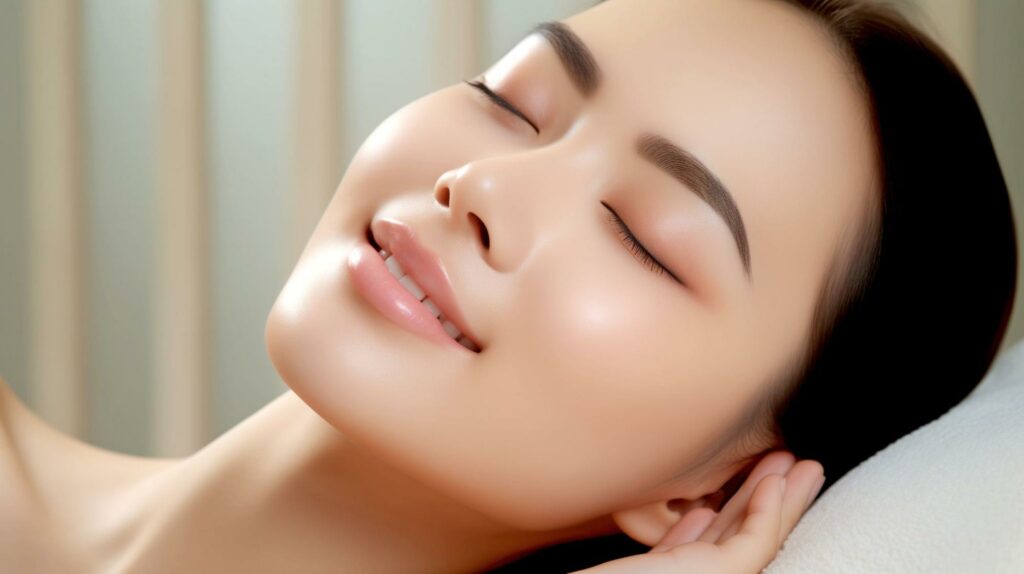Fine lines and wrinkles are a natural part of aging, but they can be managed effectively with treatments like Botox®. As the seasons change, your skin’s needs also evolve, making it essential to adapt your Botox routine accordingly.
Botox® can help maintain a youthful appearance through seasonal transitions and here at G Lab Aesthetics, we can provide tips on adjusting your treatment for optimal results.
Read on to discover how to keep your skin looking its best all year round.
Most Common Signs of Aging
As we age, our skin undergoes various changes that lead to visible signs of aging. Here are some common signs that you should be aware of:
- Forehead Lines. These lines are horizontal wrinkles that develop across the forehead due to repetitive muscle movements like raising the eyebrows. Over time, these lines become more pronounced, giving the face an aged appearance.
- Frown Lines. Also known as glabellar lines or 11 lines, they appear between the eyebrows. These vertical lines form from frowning, squinting, or concentrating, making one look perpetually tired or angry.
- Crow’s Feet. These fine lines are visible from the outer corners of the eyes. They are caused by smiling, squinting, and sun exposure, and they often deepen with age, giving a crinkled look to the eyes.
- Bunny Lines. Wrinkles that appear on the bridge of the nose when scrunching it, usually during smiling or laughing. These lines can add an unintended rough texture to the nose area.
- Lip Lines. Also called perioral lines, they are vertical wrinkles around the mouth. Often referred to as smoker’s lines, they can develop from repetitive lip movements and contribute to an aged look around the lips.
- Chin Dimpling. Popularly known as the orange peel chin, they result from muscle contractions in the chin area, leading to a bumpy texture. This can make the chin look less smooth and youthful.
- Neck Bands. These are horizontal lines and vertical bands that appear on the neck. Neck bands are caused by muscle activity and skin laxity, and they can make the neck look older and less firm.
Botox® effectively smooths these wrinkles by temporarily relaxing the underlying muscles, providing a refreshed and youthful appearance.
What is Botox®?
Botox® is a purified form of botulinum toxin type A, a neurotoxin produced by the bacterium Clostridium botulinum. It is FDA-approved for both cosmetic and medical uses. Botox® works by blocking nerve signals to the muscles, preventing them from contracting.
This relaxation of muscles leads to the smoothing of wrinkles and fine lines, resulting in a rejuvenated look. Botox® treatments are minimally invasive, involve a few small injections, and typically show results within a few days to a week.
Adapting Your Botox Treatment to Seasonal Changes
As the seasons change, so do the needs of your skin, and adapting your neurotoxin injection routine accordingly can help maintain optimal results. Here’s how to adjust your treatments for each season:
Summer: Combatting the Heat
In the summer, higher temperatures and increased sun exposure can significantly impact your skin. July, often characterized by soaring temperatures, intense sunlight, and high humidity, can pose unique challenges for maintaining your Botox® results.
The heat can cause more sweating, which may dilute and shorten the effectiveness of these anti-aging injections. Additionally, increased UV exposure can accelerate the aging process, emphasizing the importance of skin protection.
Here are some summer-specific tips to make sure your skin remains radiant and your Botox® treatments last:
- Hydration. Staying hydrated is essential during the hot summer months. Drink plenty of water to maintain skin elasticity and health. Proper hydration helps your skin recover and maintain its resilience against environmental stressors.
- Sunscreen. Applying a high-SPF, broad-spectrum sunscreen daily is essential to protect against UV damage. UV rays can break down the skin’s collagen, leading to premature aging. Sunscreen helps prevent sunburns and protects the longevity of your Botox® results by reducing UV-induced skin damage.
- Scheduling. To avoid the peak sun exposure times, consider scheduling your Botox® appointments in the early morning or late afternoon. This reduces the risk of post-treatment complications such as redness and swelling, which can be exacerbated by the heat and sun.
- Skincare Routine Adjustments. Incorporate lighter, non-comedogenic products into your skincare routine. Heavy creams can clog pores, especially when mixed with sweat, leading to breakouts and irritation. Opt for gels or serums that provide hydration without the added weight.
- Wear Protective Clothing. Along with sunscreen, wearing wide-brimmed hats, sunglasses, and long sleeves can offer additional protection against the sun’s rays. This helps in minimizing direct UV exposure to your face, maintaining the effectiveness of your Botox® treatment.
- Avoid Excessive Heat Exposure. Try to stay in cool, shaded areas as much as possible. Avoid activities that cause excessive sweating immediately after your Botox® treatment, such as intense workouts or hot yoga, as they can reduce the effectiveness of the injections.
By following these summer-specific tips, you can guarantee that your skin stays protected and your Botox® results are optimized despite the challenging summer conditions.
Fall: Transitioning Smoothly
As temperatures drop and humidity levels decrease, your skin might start feeling dry and tight.
- Moisturizing. Switch to richer, hydrating creams to combat dryness.
- Gentle Exfoliation. Regular exfoliation helps to remove dead skin cells and allows for better absorption of skincare products.
- Protective Measures. Continue using sunscreen, as UV rays can still be potent in the fall.
- Maintenance. Keep up with your Botox® appointments to address any new fine lines or wrinkles that may have developed over the summer.
Winter: Battling Dryness
Winter brings cold air and low humidity, which can strip your skin of moisture and make wrinkles more noticeable.
- Intense Hydration. Use heavier, oil-based moisturizers to keep your skin hydrated.
- Humidifiers. Use a humidifier to add moisture to the air in your home, helping to keep your skin hydrated.
- Protective Clothing. Wear scarves and hats to shield your skin from the cold wind.
- Scheduling. Regular Botox® treatments can help keep your skin smooth despite the harsh winter conditions.
Spring: Refresh and Renew
Spring is a time of renewal, and it is an excellent season to refresh your skincare routine.
- Allergy Management. If you suffer from spring allergies, they can cause puffiness and redness, which may impact your Botox® results. Manage your allergies effectively.
- Light Moisturizers. Switch back to lighter, water-based moisturizers as the weather warms up.
- Exfoliation. Increase exfoliation to shed winter-damaged skin and reveal a fresh complexion.
- Sunscreen. Reemphasize the importance of sunscreen as you spend more time outdoors.
Maintenance. Schedule a Botox® touch-up to prepare your skin for the upcoming summer months. Consider combining your treatment with other rejuvenating procedures like light chemical peels to refresh your skin after the winter months.

Adapting your Botox® routine to the changing seasons guarantees that your skin remains radiant and youthful throughout the year. By understanding how each season affects your skin and making the necessary adjustments, you can maximize the benefits of your Botox® treatments.
Take the first step towards year-round beauty by scheduling a consultation with G Lab Aesthetics in Westfield, NJ. Our experts are here to help you develop a personalized Botox® plan tailored to your unique needs and seasonal changes.
Call us now to set your appointment appointment and achieve facial rejuvenation and maintain your youthful glow!


